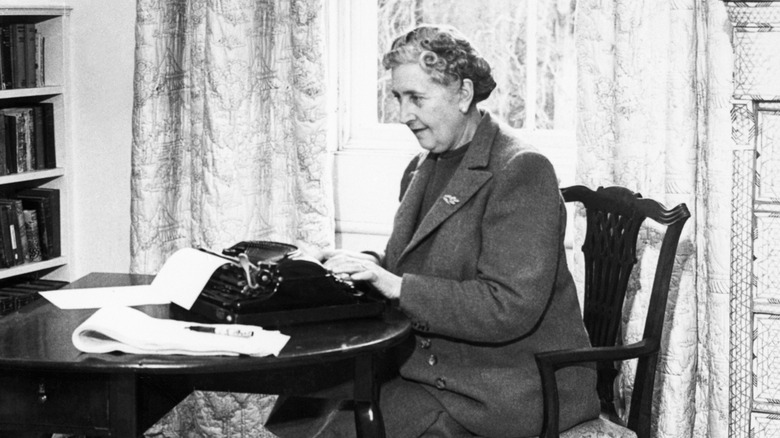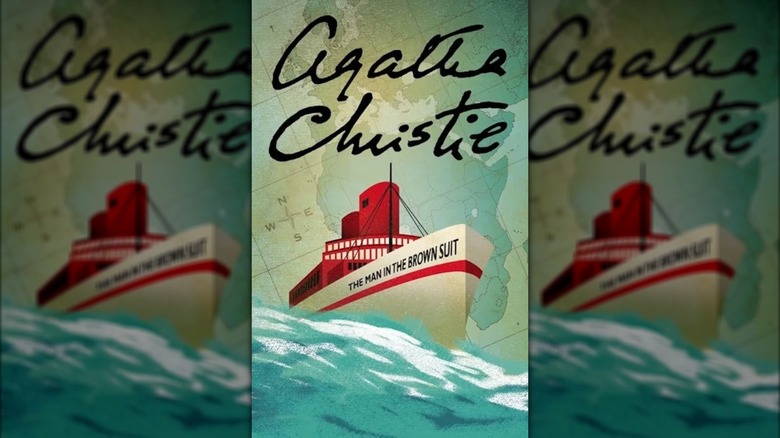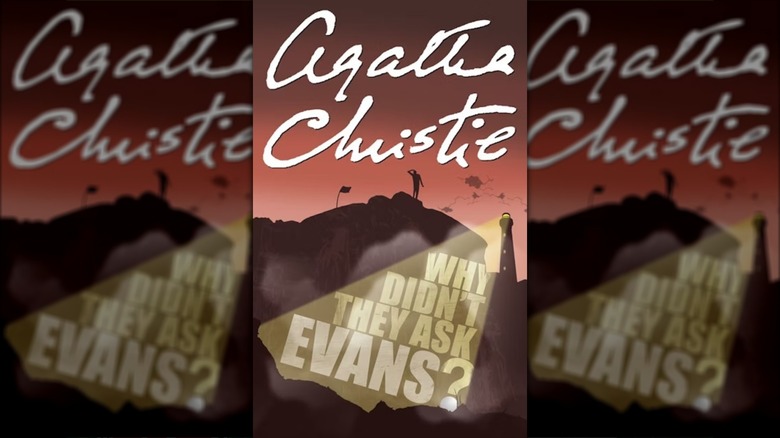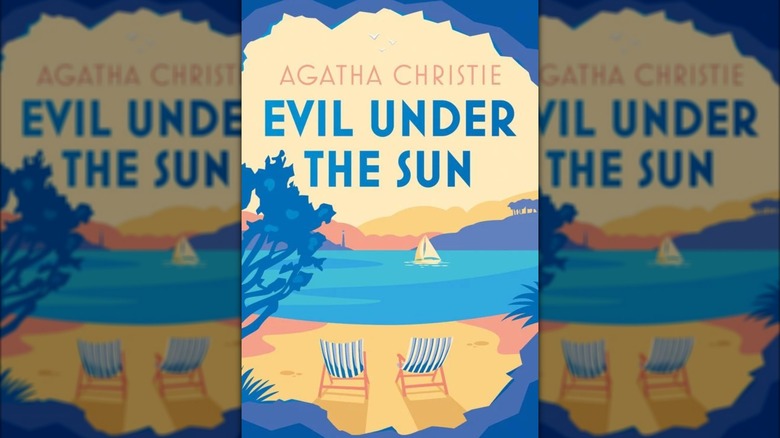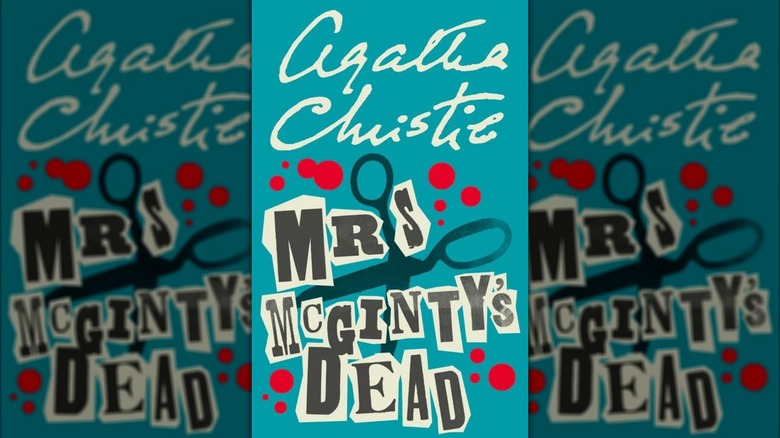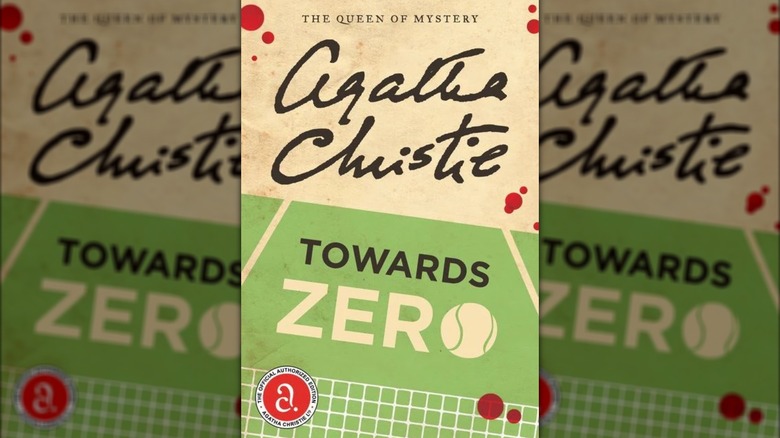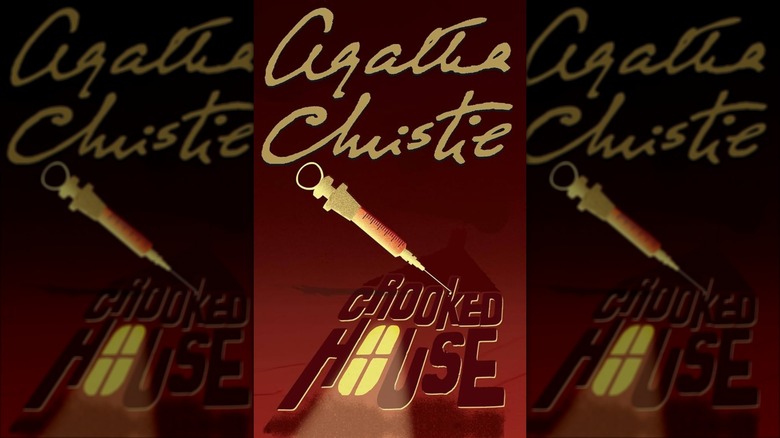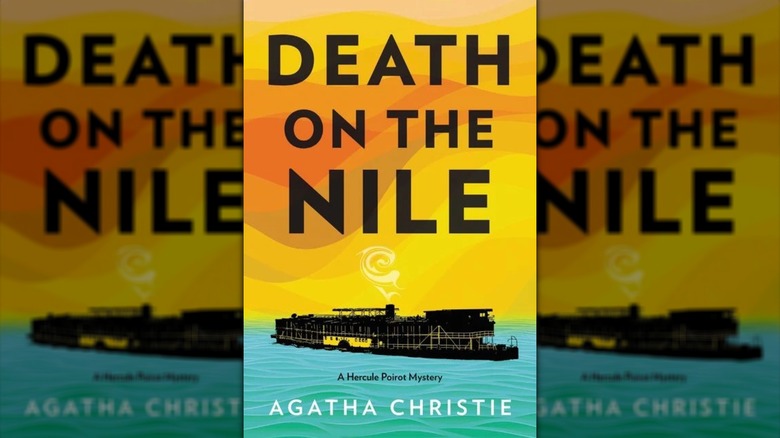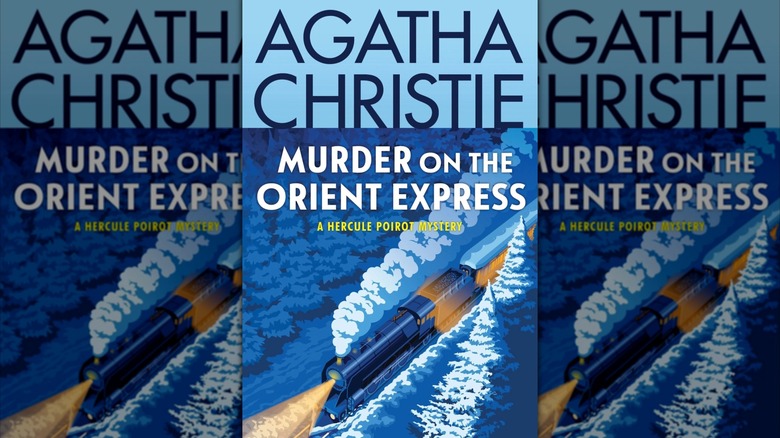Agatha Christie is so synonymous with the world of death, detectives, and clever cases that there is a mystery and crime literary award named after her. Her work, which is often described as “cozy crime,” inspired a subgenre that can be “loosely defined as mysteries that contain no explicit sex, excessive gore or gratuitous violence, and are not classified as hard-boiled,” according to the organizers of the Agatha Award. Any novel that scoops an Agatha is bound to be worth your time, but what about Christie’s books?
The English author left behind a formidable body of work when she died in 1976 aged 85, so knowing what to read can be tricky. Where should one begin? It helps that Christie wrote enough genre-defining books to fill a whole library — you really can’t go wrong. However, we’ve brought together the cream of the crop. Using a combination of critical acclaim and the personal opinions of our writer, we’ve ranked Agatha Christie’s 12 best books.
12. The Man in the Brown Suit
Miss Marple, Hercule Poirot, Tommy and Tuppence — these are just some of the many memorable detectives Agatha Christie brought to life during her long career. One of her lesser known creations is Colonel Race, who appeared in just a handful of books, often as a companion character for Poirot. In fact, he was only a lead character in two novels, one of which was 1924’s “The Man in the Brown Suit,” the fourth book Christie ever published.
Johnnie Race is a former Army Colonel who also did work for MI5 before leaving the service. In this novel, he meets working class girl Anne Beddingfeld, with whom he is instantly smitten. Unfortunately for Johnnie, Anne has her mind on murder — that of the man she encountered at the Hyde Park Corner tube station while breaking away for an adventurous vacation. The man fell upon the rails and died by electrocution.
Anne — who narrates the novel — is shocked when Scotland Yard rules the death an accident. She’s the only one who saw a man in a brown suit examine the fallen man, and the only one who saw the message he left behind: “17-122 Kilmorden Castle.” The truth comes out on a cruise, and Anne doesn’t know that Johnnie, too, is on the case at the behest of Scotland Yard. This singular adventure comes with a mouth-wateringly good mystery and some terrific characters, making it worthy of a spot on our list.
11. Why Didn’t They Ask Evans?
On more than one occasion, Agatha Christie turned a relaxing round of golf into a murder mystery, perhaps most famously in 1934’s “Why Didn’t They Ask Evans?” Christie’s fondness for golf (something she enjoyed doing with her first husband, Archibald Christie) really shines through here, but it’s the two central characters and the flawless mystery that earn this stellar novel a place on our list. It’s a terrific mental workout that will have you completely invested throughout. But what’s it about, exactly?
Bobby Jones isn’t the world’s best golfer, so when he slices his ball over a cliff edge during a round, it’s not surprising. What is surprising is what he finds when he goes to look for the ball: A man lies broken and bleeding on the rocks. Jones comforts him, and with his dying breath, the man says: “Why didn’t they ask Evans?” It’s a question Bobby can’t let lie. He and his friend Frankie find themselves tracking down the person who killed the mystery man, as well as the seemingly invisible Evans, a quest that will soon put their own lives at risk.
10. Evil Under the Sun
One of the most famous Hercule Poirot stories due to it being adapted for the screen on numerous occasions, 1941’s “Evil Under the Sun” takes the Belgian detective to England’s south coast. He’s hoping to enjoy a peaceful holiday on an island off the coast of Devon (the home county of Agatha Christie), but his downtime is soon interrupted by a murder, one that he saw coming. Poirot noticed the signs of an extramarital affair blooming between former actress Arlena Marshall and a man named Patrick Redfern as soon as he arrived at the resort, and when Arlena is found dead in a cove, strangled by a mystery assailant, he springs into action.
The deeper Poirot dives into this gripping mystery, the more complicated it becomes and the higher the number of suspects there are. As is usually the case in Christie’s novels, pretty much every character has a reason to want the victim dead. What sets “Evil Under the Sun” apart is the genius misdirection she employs. There are red herring galore here, and even the most seasoned reader of murder mystery novels will be hard-pressed to work out who committed the murder and how they pulled it off. This is a real page-turner of a novel that most definitely deserves its place on our list.
9. By the Pricking of My Thumbs
It’s hard to pick a Tommy and Tuppence mystery to recommend individually. The series grows along with its titular married detectives, following them from their twenties to semi-retirement. But “By the Pricking of my Thumbs” stands alone and manages to introduce the characters in a way that doesn’t leave readers lost at sea. Some might prefer starting with their first story, “The Secret Adversary,” but this novel examines the poignancy of their union — and makes a solid point about never underestimating the elderly, making it a vital read for both young and old.
Thomas Beresford and his wife Prudence, aka Tuppence, find themselves in a pickle when visiting Tommy’s elderly Aunt Ada at a retirement home. Tuppence gets into a conversation with another resident in the home, who says, “Was it your poor child? There behind the fireplace.” This horrifying statement remains unresolved when Ada dies the next day. While it initially looks like a case of an old lady meeting her natural end, it becomes more complicated the more Tommy and Tuppence talk to the home’s residents. Poisoned mushroom stew, occult murders involving small children — something ugly happened here, and they don’t want Tommy and Tuppence to uncover the truth.
8. Mrs McGinty’s Dead
There’s no guess work involved when it comes to figuring out who the victim is going to be in “Mrs McGinty’s Dead” — the titular landlady has already been murdered when the story begins. A young man named James Bentley has been arrested and found guilty, but Hercule Poirot is called in by Superintendent Spence, who is unconvinced about Bentley’s guilt. Poor and without job prospects, he was rooming at Mrs McGinty’s place when she turned up dead, whacked on the back of the head. The boon? Only thirty pounds. While everyone seems to think Bentley did it, Poirot agrees to examine the case and goes to Broadhinny, where Bentley and McGinty lived together. There, her murder seems less and less like an open and shut case.
This one’s a blast of tart, fresh air. Laden with social satire that plays on life in small town, rural England, it’s both a great mystery and a fun ride. Agatha Christie was a natural wit, and this cozy caper makes you laugh as often as it will thrill you. Poirot ends up working with crime novelist Ariadne Oliver (none of Christie’s characters are directly based on real people, though Oliver has “a strong dash” of herself, she once admitted) to figure out who killed poor old Mrs McGinty. Oliver was played by Tina Fey in “A Haunting in Venice,” though her version differs from the book one. “Mrs McGinty’s Dead” is of the best Poirot outings, and definitely one of the most scintillating mysteries ever posed to his little grey cells.
7. The Murder at the Vicarage
Agatha Christie’s unassuming amateur detective Jane Marple specializes in subtly exposing the rotten underbelly of St. Mary Mead, the quaint English village she calls home. That’s exactly what she does in “The Murder at the Vicarage,” a must-read for cozy crime lovers. Here, Christie pits Miss Marple against a close-knit group of people who desperately want to conceal which of them murdered the abrasive Colonel Protheroe, the local churchwarden. He wasn’t a popular man: Reverend Leonard Clement tries to keep the peace at St. Mary Mead, but the entire vicarage is constantly upset by the colonel’s behavior.
The thing is, while Clement is the vicarage’s spiritual leader, Protheroe represents every form of law and order — he’s also the magistrate. As such, everyone hates him, even Clement. “Anyone who murdered Colonel Protheroe would be doing the world at large a favour!” he declares one evening. When Protheroe turns up dead at his writing desk soon after, a bullet put through the back of his head, the suspect list is enormous. It might have been Clement, who was about to be called out over financial irregularities in the parish’s accounts. It might have been young artist Lawrence Redding, who is having an affair with Protheroe’s wife, Anne. It turns out several people have a reason to want the colonel dead, as Miss Marple soon discovers.
6. Towards Zero
In 1944’s “Towards Zero,” a very twisty mystery that is still satisfying readers decades later, a gathering at a clifftop seaside house leads to murder. Lady Tressilian is in the habit of inviting those close to her to summer away at her estate, Gull’s Point. This year she’s bedbound, aided by her companion Mary Aldin in most tasks. But this doesn’t stop her from asking her late husband’s ward, Nevile Strange, home to spend the long hot months. Nevile has grown up to become a dazzling tennis star, and he has acquired a new wife, Kay, while out and about. The thing is, Nevile has also invited his ex-wife, Audrey, to the gathering.
Lady Tresilian does not approve of Nevile inviting both his former and current wives to the gathering, but she makes room for the women anyway. She is unwittingly hosting a powder keg of romantic dissatisfaction and monetary hunger that will lead to murder. One of the great things about “Towards Zero” is that the plot largely takes place in the run-up to the slaying, hence the title. It was this that made it one of Christie’s favorite stories to work on. “I found it interesting to work on the idea of people from different places coming towards a murder, instead of starting with the murder and working from that,” she once said.
5. Crooked House
Another of Agatha Christie’s favorites, 1949’s “Crooked House” features a truly twisted family dynamic, a completely unexpected killer, and some terrifically dark plotting. If you’ve seen the 2017 movie adaptation starring Glenn Close, Max Irons, and Stefanie Martini, then you’ll already know that the ending of “Crooked House” is quite the shocking gut punch. The story really takes no prisoners, making it one of the most unforgettable in all of Christie’s canon. It follows the Leonides family, who are completely messed up. Charles Hayward doesn’t mind — he’s willing to enter it to marry granddaughter Sophia, whom he met and fell for at the tail end of World War II.
Charles and Sophia are reunited in London when Sophia’s grandfather, Aristide Leonides, passes away. Sophia suspects that the wealthy Greek business mogul has been murdered, and Brenda Leonides is the prime suspect, being Astride’s much-younger wife. Laurence Brown, the tutor of Sophia’s younger siblings — with whom Brenda has been conducting an affair — is also in the frame. But the whole Leonides family is bubbling with resentment, lust, and madness. Charles and Sophia’s love story hangs in the balance as the former works hard to figure out who really killed Aristide.
4. The Mirror Crack’d from Side to Side
1962’s “The Mirror Crack’d from Side to Side” finds Miss Marple recovering from a fall. During this time, she learns that actress Marina Gregg is now living in the village of St. Mary Mead. At a charity dinner that Marina throws for the local glitterati, a local named Heather is killed after gushing to the actress about a previous meeting between them.
Authors sometimes take inspiration from real-life sources. In Agatha Christie’s case, “The Mirror Crack’d from Side to Side” was partially borne from the tragedy of actress Gene Tierney, who came down with German measles following an appearance at the Hollywood Canteen. She was pregnant at the time, and the measles “caused her daughter to be born with disabilities,” wrote Dan Callahan of the British Film Institute. “Tierney’s anguish over her daughter’s condition was compounded when a female fan later approached her to tell her that she had broken her quarantine for German measles to see Tierney at the Hollywood Canteen.”
Even without this tragic twist of fate adding an extra stroke of horror to Christie’s fiction, “The Mirror Crack’d from Side to Side” would still be a perfect tale of bloody-minded revenge and an incredibly harrowing mystery. While most fans think of Miss Marple stories as cozy, this is anything but. She’s still up for the task, however – in this emotional, dark tale, Jane Marple is a perfect anchor for justice. It is undeniably one of the most compelling Marple mysteries, in part because you may find yourself rooting for the killer.
3. Death on the Nile
A classic Hercule Poirot mystery and one of three novels that has come to define Agatha Christie’s legacy, 1937’s “Death on the Nile” has the Belgian brainiac trying to find out who murdered a rich socialite. The mustachioed Poirot is at his best in “Death on the Nile,” with a whole lot of surprises and interesting suspects. He is once again attempting a vacation (a cruise down the Nile) when a murder ruins his plans.
The case begins when Poirot is approached by Linnet Doyle, who wants help with a stalker — she recently married the former fiancé of her friend Jacqueline de Bellefort, and Jackie has taken to following Linnet and Simon wherever they go, including Egypt. Of course, when Linnet is shot dead, Jackie becomes the prime suspect. There’s only one issue: she has a water-tight alibi.
“Death on the Nile” is peak Poirot, with exotic and atmospheric locations, dangerous love triangles, and a seemingly unsolvable mystery — The Sunday Times called it “As ingenious an alibi as can well be imagined” in its review of the book. Christie’s own travels in Egypt really inform her writing here, making the people and places pop off the page. The ending of “Death on the Nile” is fraught with romantic nightmares and dreams of untold riches, and it’s a twist that few people ever see coming.
2. Murder on the Orient Express
When you hear the name Hercule Poirot, it will usually be either “Death on the Nile” or this inimitable mystery that pops into your mind. 1934’s “Murder on the Orient Express” sees Poirot taking the famous train from Istanbul to London, though not in circumstances he would like — he’s only embarking on the journey because he received a telegram requesting that he return to London as quickly as possible due to a development in a case. The dapper detective is forced to take a second-class cabin, and the train ends up getting stuck in heavy snow. To make matters worse, a passenger has been murdered: an American named Samuel Ratchett.
Ratchett, an American businessman, had previously approached Poirot, begging to hire him as private security in light of recent death threats. He makes a bad first impression on the Belgian, who refuses his offer. A series of odd occurrences happen that night, and the next morning, Poirot learns that Ratchett has been stabbed to death in his compartment. A partially-burned note at the scene reveals a connection to the mafia and the tragic murder of a young girl some years ago.
The film adaptation starring Albert Finney as Poirot is one of the best mystery movies of all time, and the David Suchet version from 2010 is one of the best episodes in the “Poirot” TV series. The novel is among Christie’s favorites, chiefly because she was able to come up with an ingenious mystery that stumped her readers. “It was a new idea for a plot,” she said of the twist, which we won’t spoil here.
1. And Then There Were None
One of the top ten best-selling books of all time, 1939’s “And Then There Were None” is Agatha Christie at the height of her powers. It’s a classic of the mystery genre, with its slow-burn developments and completely unpredictable twists and turns. If you like detective stories where the crime slowly unveils itself, then this is the book for you. It’s a novel everyone must read at least once — but what’s it all about?
Eight strangers are invited to a house in Devon, the setting of so many great Christie tales. They’re met by Thomas and Ethel Rogers, the butler and housekeeper at the estate. They’re told that the place is owned by a Mr. and Mrs. Owen, who will be arriving shortly. That’s when things start going crazy. After being accused of murder via a gramophone recording, the first guest is poisoned. From there, the bodies begin to pile up and paranoia sets in. It’s a gripping book that you won’t be able to put down.
When Christie’s estate launched a poll to find out which of her novels was the most popular with readers worldwide, “And Then There Were None” came top, an outcome they expected. “It’s probably the book my grandmother was proudest of. It would have been a big surprise if it hadn’t won — it’s a very worthy winner,” said Mathew Prichard, Christie’s grandson (via The Guardian). “It’s very carefully and skilfully constructed, to get away, so to speak, with a plot as complicated as this, and to end up with a solution which you can actually see at the end that it works.”

